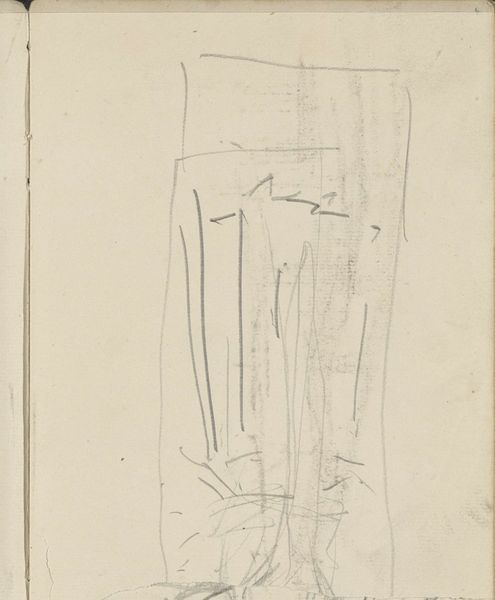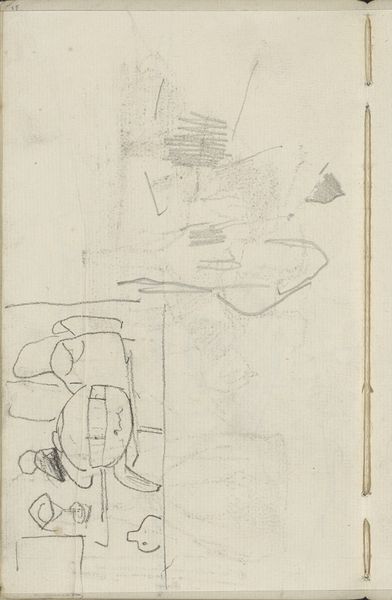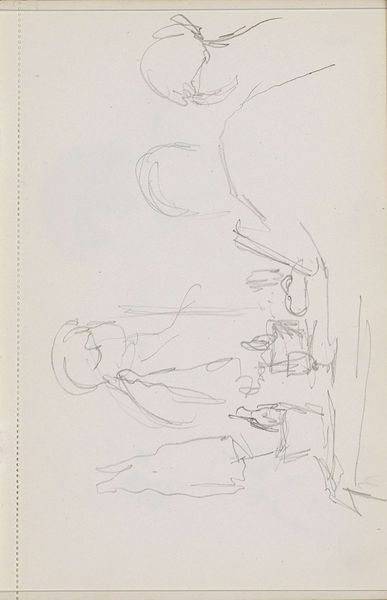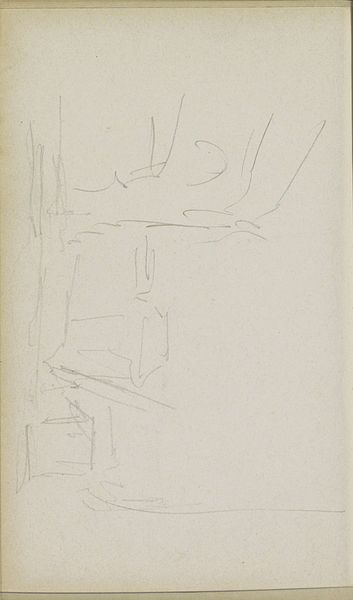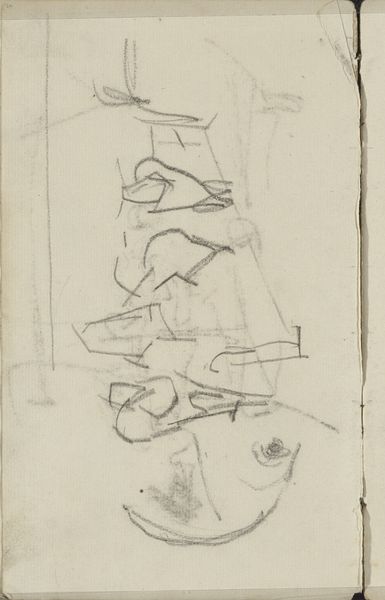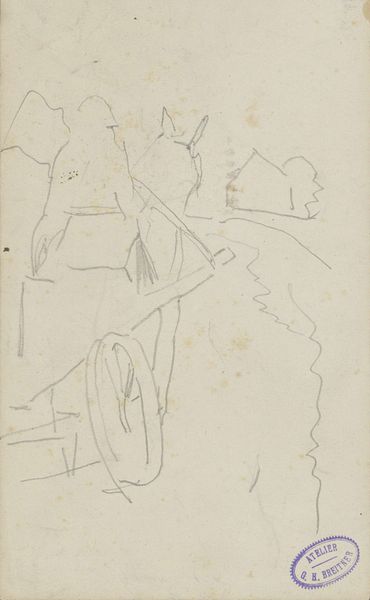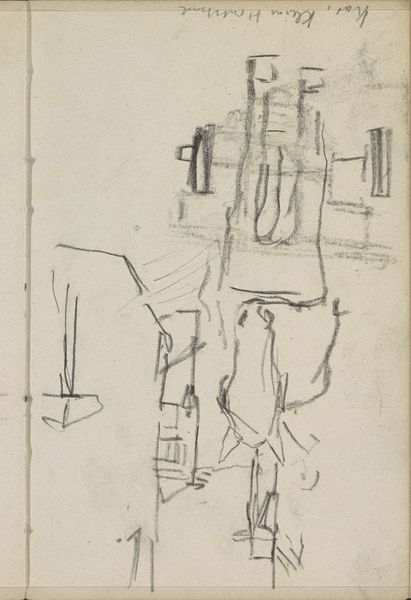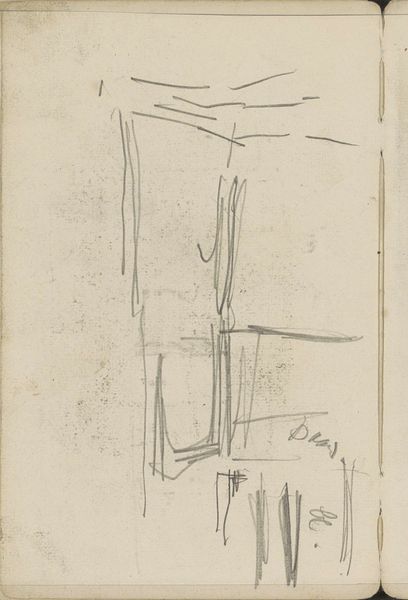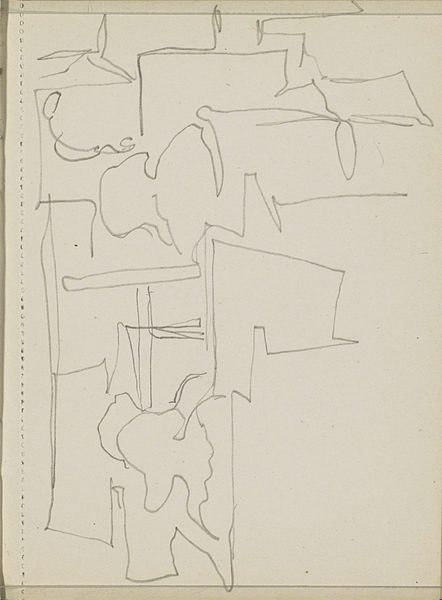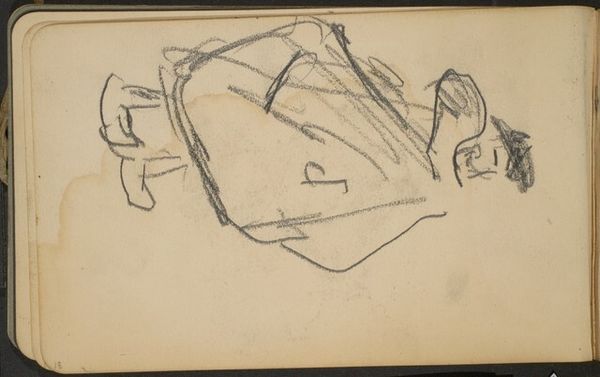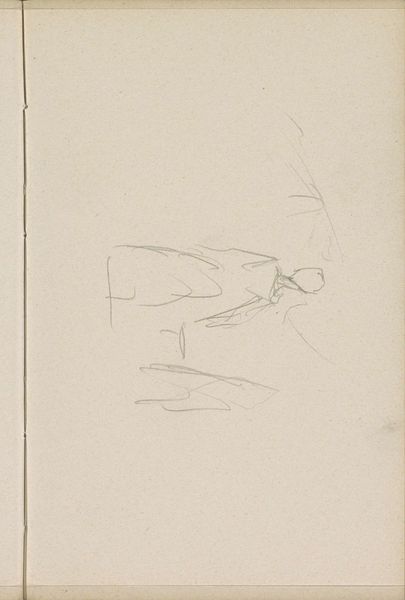
drawing, paper, pencil
#
drawing
#
comic strip sketch
#
imaginative character sketch
#
toned paper
#
light pencil work
#
paper
#
personal sketchbook
#
idea generation sketch
#
ink drawing experimentation
#
geometric
#
pencil
#
abstraction
#
sketchbook drawing
#
storyboard and sketchbook work
#
sketchbook art
Copyright: Rijks Museum: Open Domain
Editor: Here we have "Two Abstracted Figures with Heads Together," a pencil drawing on paper made sometime between 1906 and 1945 by Reijer Stolk. It's such a simple composition, but it gives off a powerful feeling of intimacy and perhaps tension. What do you see in this piece? Curator: It’s interesting you pick up on both intimacy and tension. Considering the period, which spans both World Wars, the formal abstraction might be read as a reaction to the trauma and displacement of those years. What does it mean to depict connection – the figures’ heads pressed together – when the world around you is being torn apart? Does this physical closeness signify solidarity, or a desperate attempt to find comfort? Editor: That’s a great point. I hadn’t thought about the historical context. The simple lines now seem loaded with a different kind of meaning. Curator: Exactly! The abstraction also allows us to consider broader social anxieties about identity and belonging. Notice how the faces are not clearly defined. What could that ambiguity signify in a time of shifting national identities and ideological conflicts? The drawing invites us to question the very nature of connection and representation. Does the anonymity challenge traditional power structures that rely on easily identifiable figures? Editor: So, by obscuring the specific identities, Stolk could be commenting on the collective experience of those tumultuous times? Curator: Precisely. Art can become a powerful tool for social commentary when it moves away from straightforward representation and asks us to consider the deeper implications of shared human experience. Think of it as a quiet act of resistance. Editor: This makes me see the drawing in a completely new light! I’m struck by how much context can shape our interpretation. Curator: Absolutely. By exploring these connections, we can move beyond purely aesthetic appreciation and start to understand how art engages with, and responds to, the world around it. It shows you how social context can provide deeper meaning to even the most simple sketches.
Comments
No comments
Be the first to comment and join the conversation on the ultimate creative platform.
